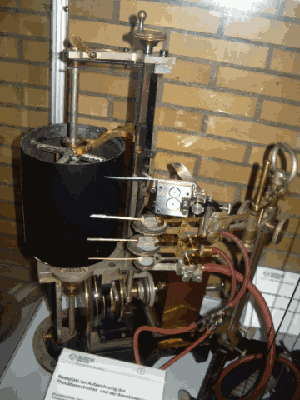Instrumental Studies in Arabic Phonetics
Edited by Zeki Majeed Hassan and Barry Heselwood
Publishing by John Benjamins Publishing company
décembre 2011, ISBN 978 90 272 4837 4
Brought together in this volume are fourteen studies using a range of modern instrumental methods – acoustic and articulatory – to investigate the phonetics of several North African and Middle Eastern varieties of Arabic. Topics covered include syllable structure, quantity, assimilation, guttural and emphatic consonants and their pharyngeal and laryngeal mechanisms, intonation, and language acquisition. In addition to presenting new data and new descriptions and interpretations, a key aim of the volume is to demonstrate the depth of objective analysis that instrumental methods can enable researchers to achieve. A special feature of many chapters is the use of more than one type of instrumentation to give different perspectives on phonetic properties of Arabic speech which have fascinated scholars since medieval times. The volume will be of interest to phoneticians, phonologists and Arabic dialectologists, and provides a link between traditional qualitative accounts of spoken Arabic and modern quantitative methods of instrumental phonetic analysis.
@BOOK{Zeki Majeed Hassan and Barry Heselwood,
title = {Instrumental Studies in Arabic Phonetics},
publisher = {John Benjamins Publishing company},
year = {2011},
editor = {Zeki Majeed Hassan, Barry Heselwood},
author = {Zeki Majeed Hassan, Barry Heselwood and all},
owner = {},
timestamp = {12.2011}
}

LA COARTICULATION
Des indices à la représentation
Christelle Dodane, Mohamed Embarki
Éditions L'Harmattan
septembre 2011, ISBN : 978-2-296-55503-7
La parole est faite de gestes articulatoires complexes qui se chevauchent dans l'espace et dans le temps. Ces chevauchements, conceptualisés par le terme coarticulation, n'épargnent aucun articulateur. Ils sont repérables dans les mouvements de la mâchoire, des lèvres, de la langue, du voile du palais et des cordes vocales.
Cet ouvrage collectif réunit des contributions inédites de chercheurs internationaux abordant la coarticulation des points de vue moteur, acoustique, perceptif et linguistique.
@BOOK{Dodane2011,
title = {LA COARTICULATION Des indices à la représentation},
publisher = {Éditions L'Harmattan},
year = {2011},
editor = {Dodane, C. Embarki, M.},
author = {Dodane, C. Embarki, M. and all},
owner = {},
timestamp = {09.2011}
}

Modern Trends in Arabic Dialectology
الاتجاهات الحديثة في علم اللهجات العربية
Ouvrage publié sous la direction de Mohamed Embarki disponible chez Amazon. Pour plus d'informations, cliquez sur l'image de couverture.
Paperback: 256 pages
Publisher: The Red Sea Press (February 21, 2011)
Language: English
ISBN-10: 1569023476
ISBN-13: 978-1569023471
The relevance of this book is highlighted first by the fact that language-based approaches are still lacking in Arabic dialectology. The classification of Arabic dialects is not yet entirely satisfactory. Geographical and sociological layers were traditionally based on the assumption that the saliency of some features in the Modern Arabic dialects is the product of two different processes: diffusion and innovation.
However, this traditional approach is not consistent with the history of Arabic. For instance, the saliency of some features that support the classification of the Modern dialects varies according to features that can be traced back to Classical Arabic, Islamic dialects, Old Arabic dialects, or proto-Arabic.
Another explicative process has been, to some extent, neglected in the study of Arabic dialects, namely inheritance. Some phonological features currently present in Modern Arabic dialects cannot be explained by any of the two terms of this paradigm. As long as the mapping of Western approaches on Arabic dialects seems to be relatively unsatisfactory, diffusion and innovation are found to be incomplete to explain the extreme variability of the linguistic features of the Arabic dialects. Since some features appear in very distant isolated isoglosses, they are consistent neither with diffusion nor with concomitant innovation; only their underlyingly inherited nature could provide a logical scheme. Introducing the process of inheritance, besides diffusion and innovation, aims to enlarge our knowledge of the history of the Modern Arabic dialects.
The threefold paradigm is more accurate to perform satisfying explanations of the features of similarity and dissimilarity between Old Arabic and Modern Arabic dialects, at the synchronic and diachronic levels. This book aims to shed light on recent trends in Arabic dialectology. Cross-cultural analyses are provided by scholars from different origins (Arabic native speakers and excellent Arabists) and from different linguistic backgrounds (Arabic, Berber, English, French, Hebrew, Spanish). The chapters are all devoted to produce systematic descriptions and analyses of Arabic dialects. The book is divided into three thematic sections: (a) Theoretical and Historical Perspectives and Methods in Arabic Dialectology; (b) Eastern Arabic Dialects; and (c) Western Arabic Dialects.
@BOOK{Embarki2011,
title = {Modern Trends in Arabic Dialectology},
publisher = {Trenton, USA: The Red Sea Press},
year = {2011},
editor = {Embarki, M. Ennaji, M.},
author = {Embarki, M. Ennaji, M. and all},
owner = {},
timestamp = {20.03.2011}
}
Pour plus de détails et pour commander, cliquer sur l'image de couverture
สำหรับรายละเอียดและสั่งซื้อคลิกที่รูปปก
For details and to order, click the cover image
للحصول على التفاصيل وترتيب، انقر فوق صورة الغل
Для подробной информации и заказа, нажмите обложку
کے حکم سے رپورٹ کیا ہے اور اس کا احاطہ تصویر پر کلک کے لئے
Para obtener más información y para ordenar, haga clic en la imagen del libro
დეტალები და წესრიგის, დააწკაპუნეთ ყდის სურათი
Pou plis detay epi pou yo kòmande, klike sou imaj ak kouvèti
برای کسب اطلاعات و به منظور، با کلیک بر روی تصویر جلد


